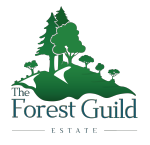
Throughout the last few years, we have been doing a lot of very selective clearing of certain plant species, like BLACKBERRIES, to prevent them from completely taking over. With most of the major clearing out of the way, this season my primary focus will be to plant more fruit trees, nut trees, and other perennial edibles. After all, it is a food forest! I’m also really focusing on bringing in perennial flowers and shrubs to help attract pollinators–and repel pests using integrated pest management (IPM is a huge subject and one I will be talking about a lot as we go.) Remember though, the more diversified a garden is, the less likely you will run into trouble!
This blog will focus on my top 10 BC-native plants for attracting hummingbirds because hummingbirds are amazing pollinators and native plants are vital to our (and their) ecosystem.
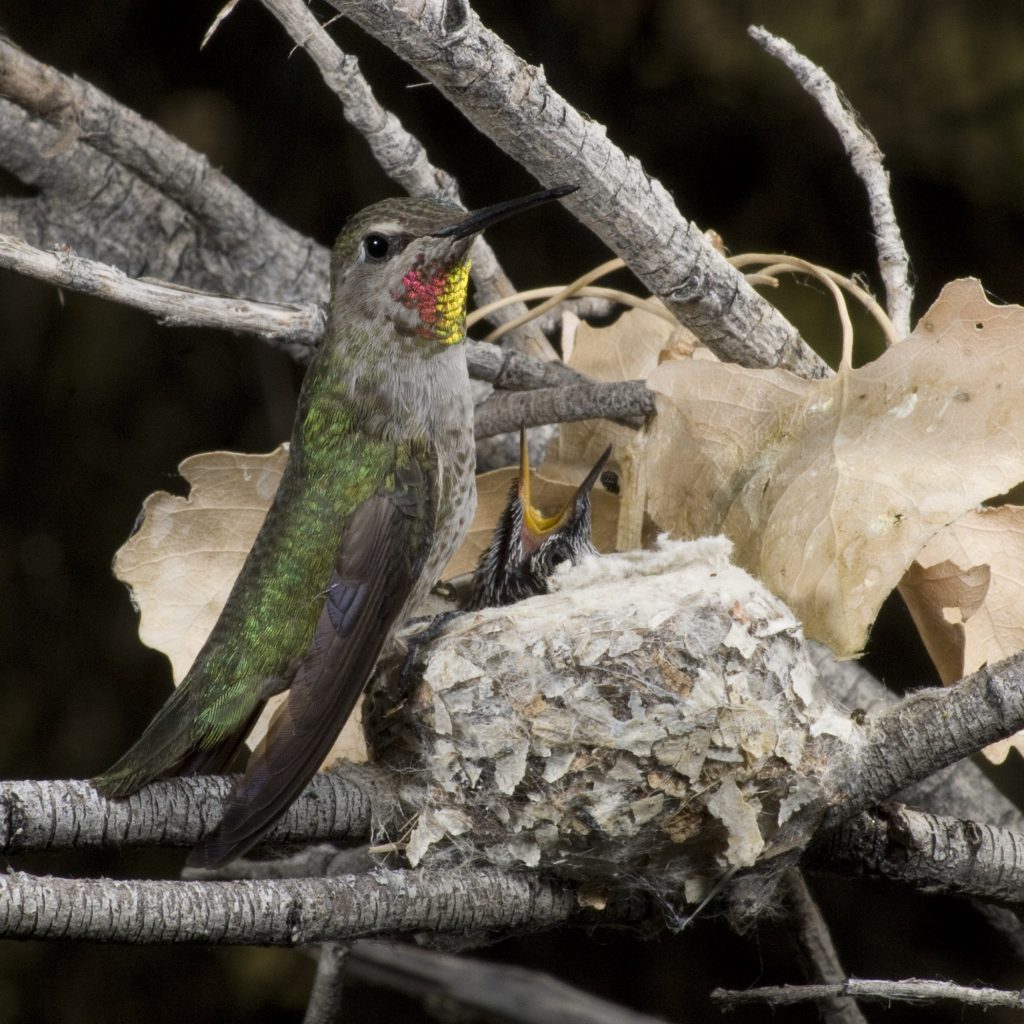
Botanical Name: Lonicera ciliosa
Family: Caprifoliaceae
Bloom Time: May – July
The Western Trumpet has gorgeous red and orange colouring which hummingbirds are naturally attracted to. In fact, with a poor sense of smell, hummingbirds use colour as a signal for nectar. Once nectar has been found, hummingbirds slide their long and slender beaks perfectly into the trumpet-like honeysuckle flowers. Since the Western Trumpet plant is native to the pacific northwest forest, we were lucky enough to find quite a few vines of it naturally running through our neck of the woods.
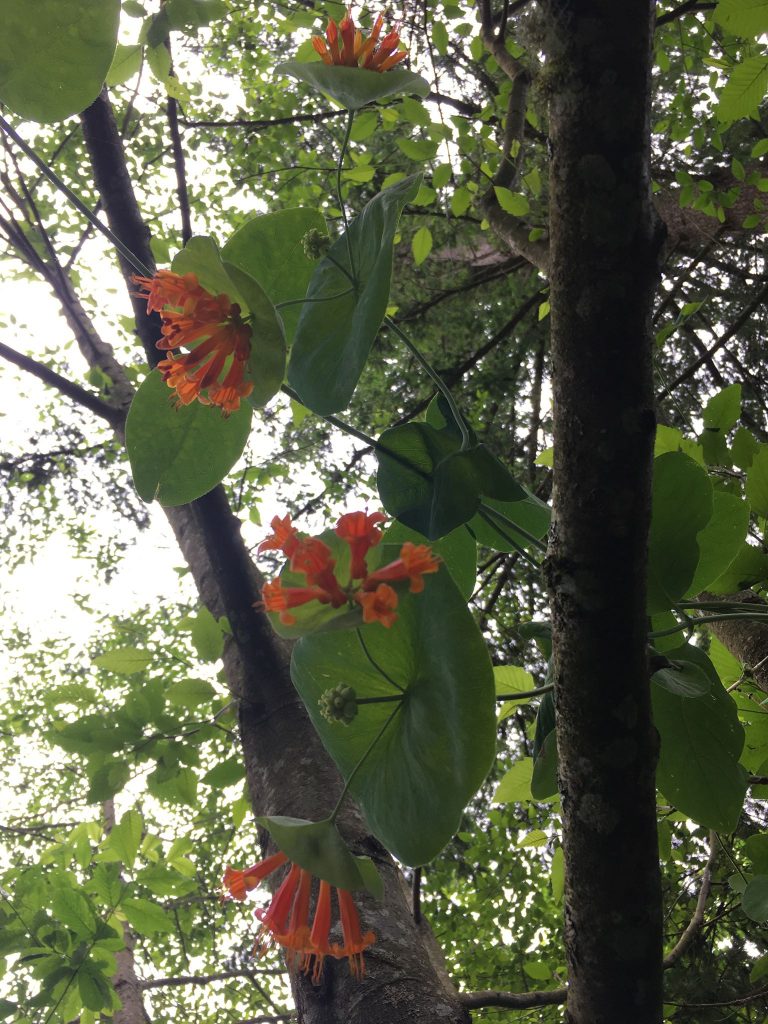
Botanical Name: Aquilegia formosa
Common Name: Family: Ranunculaceae
Bloom Time: May – August
The Sitka Columbine flower is extremely attractive to hummingbirds and butterflies with its bright red colour and lovely nectar. I sowed many Red Columbine seeds last spring, so I’m expecting to see them emerge this spring. Can’t wait!
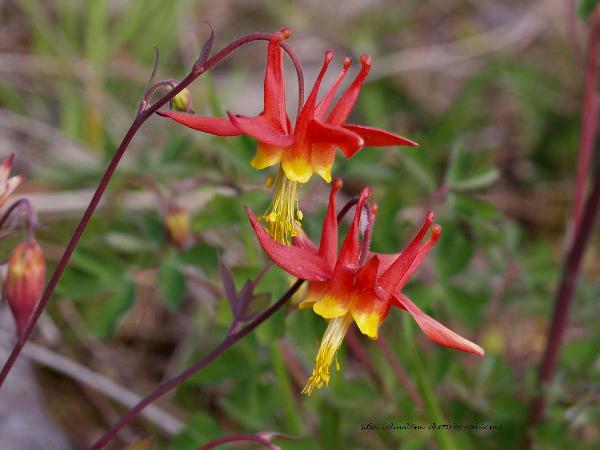
Botanical Name: Lilium columbianum
Family: Liliaceae
Bloom Time: June – September
This yellow, orange and red spotted flower is a fabulous choice for hummingbirds and butterflies too. Like many of the flowers on this list, the Tiger Lily faces downwards. When hummingbirds put their long beaks up inside these downward-facing flowers to collect the nectar, pollen often falls out on the hummers neck, back, chin and throat, making them excellent pollinators!
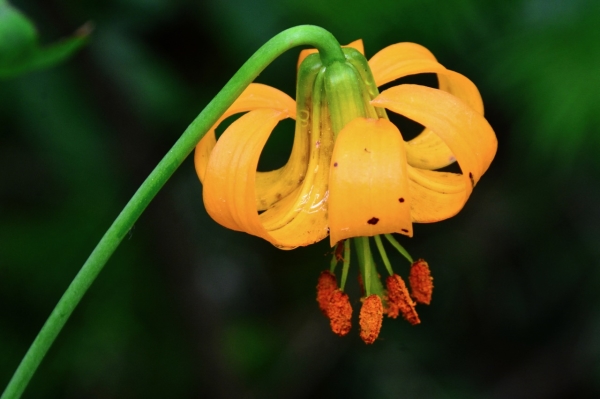
Botanical Name: Dicentra formosa
Family: Papaveraceae
Bloom Time: March – July
Bleeding Hearts have always been a favourite of mine, so easily recognizable to even a small child. This plant is wonderful for not only hummingbirds, bees and butterflies, but they also have a beneficial relationship with ants. That’s right: ants take the seeds and part of the flower for food and then drop the seeds, essentially planting them, as they crawl through the forest. Our part of the woods has an extensive Bleeding Hearts population, which pops in the early spring and then keeps on giving.
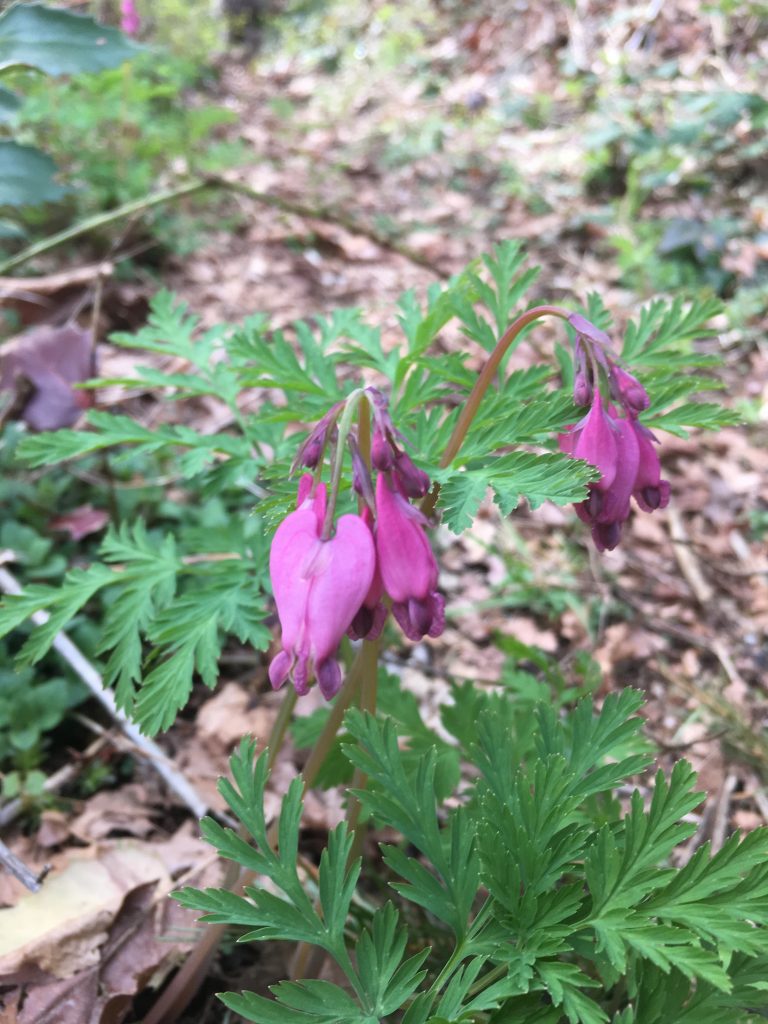
Botanical Name: Ribes sanguineum
Family: Grossulariaceae
Bloom Time: March – April
Both hummingbirds and bumblebees flock to the flowers of the Red-flowering Currant. The beautiful red is extremely attractive to the Rufous and Ana hummingbirds as it has lots of nectar. The Red-Flowering Currant is also loved by many birds and other wildlife. As a bonus, it is
deer resistant and a wonderful erosion control. I’ll be adding a lot of this plant to help protect our hillside with extra stabilization.
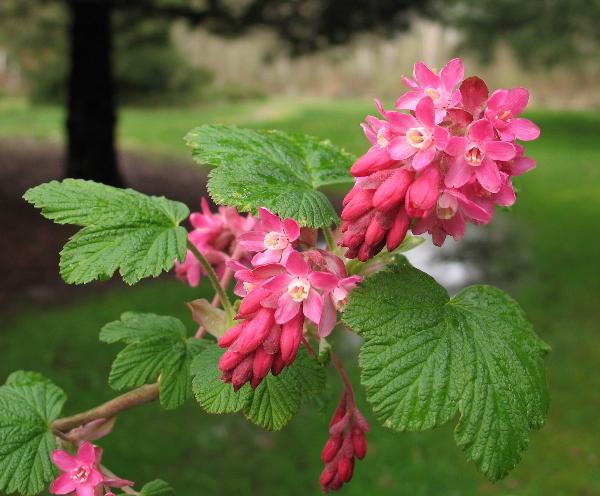
Botanical Name: Rubus spectabilis
Family: Rosaceae
Bloom Time: March – June
Filled with very sweet nectar and dressed in a beautiful bright reddish pink, the Salmonberry beckons the hummingbird over to have a taste. Interestingly, the flowers seem to open at the same time that the Rufous Hummingbird migrates into BC.
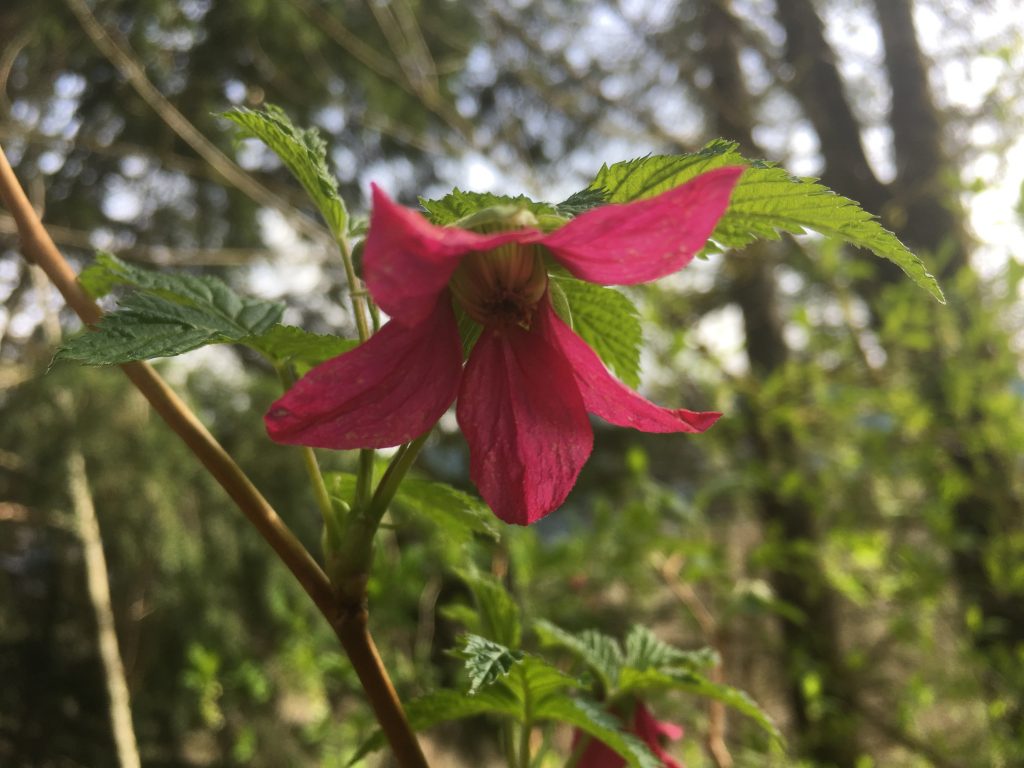
Botanical Name: Vaccinium parvifolium
Family: Ericaceae
Bloom Time: April – June
Not only is the Red Huckleberry a favourite of my children, it is a favourite of the hummingbirds and many other wildlife. When harvesting for yourself, please remember the golden rule of never taking too many from one spot. If you always leave an abundance, you will never over harvest.
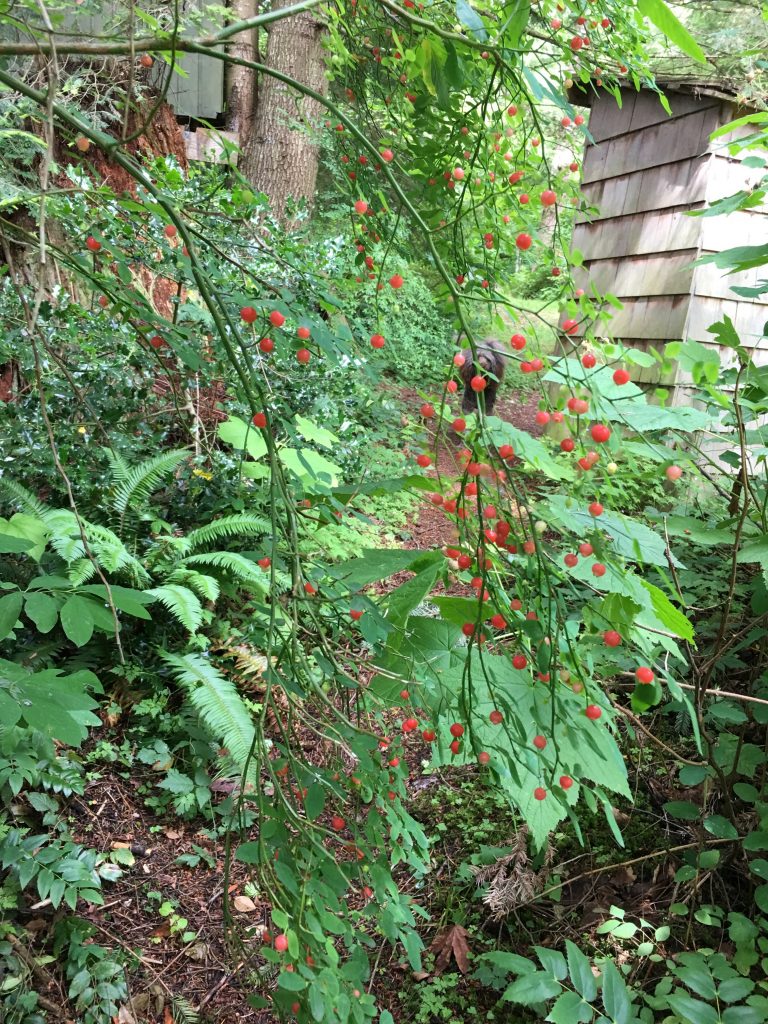
Botanical Name: Rhododendron macrophyllum
Family: Ericaceae
Bloom Time: April – July
To be honest, I was OVER Rhodos…did I dare just say that? I did. My parents had many Rhododendrons when I was a child and I found them a tad bit boring. I didn’t regain my appreciation for them until the last couple of years. Now, I even “rescue” them from other gardeners that no longer want them. In BC, we have our very own variety of the Rhododendron, the Pacific Rhododendron, in a lovely shade of pink. Rhododendrons have some wonderful attributes and, as evergreens, they make excellent screens. I am trying to collect one of these trees in every colour to make a beautiful screen fence.
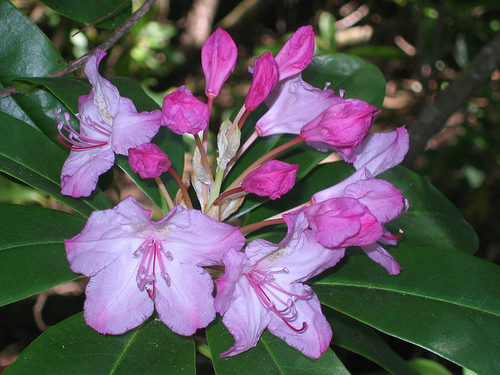
Botanical Name: Lonicera involucrata
Family: Caprifoliaceae
Bloom Time: March – August
When I think of Honeysuckle, I think of hummingbirds. Probably because it’s an excellent source of nectar for hummingbirds. The berries on this plant are also eaten by many small animals, birds and even bears.
Honeysuckle has quite a few uses, from erosion control to bank stabilization. It’s also a host for lepidopteran larvae (butterflies!).
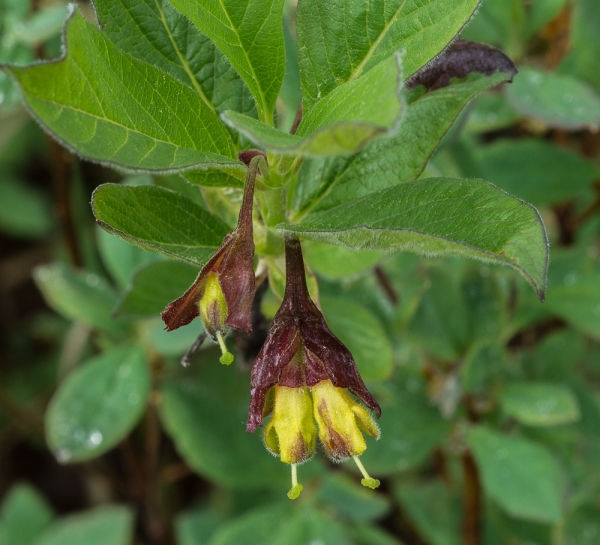
Botanical Name: Ribes divaricatum
Family: Grossulariaceae
Bloom Time: April – May
Honestly, this flower isn’t that showy, but it is a native! I had trouble finding 10 plants that were both native and great for hummingbirds. Luckily this plant checks both boxes. The Straggly Gooseberry also has great juicy berries–but you have to act fast before the birds get them all.
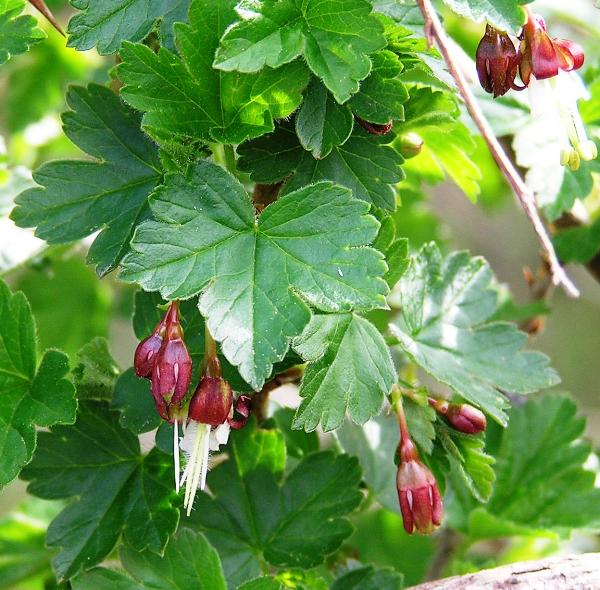
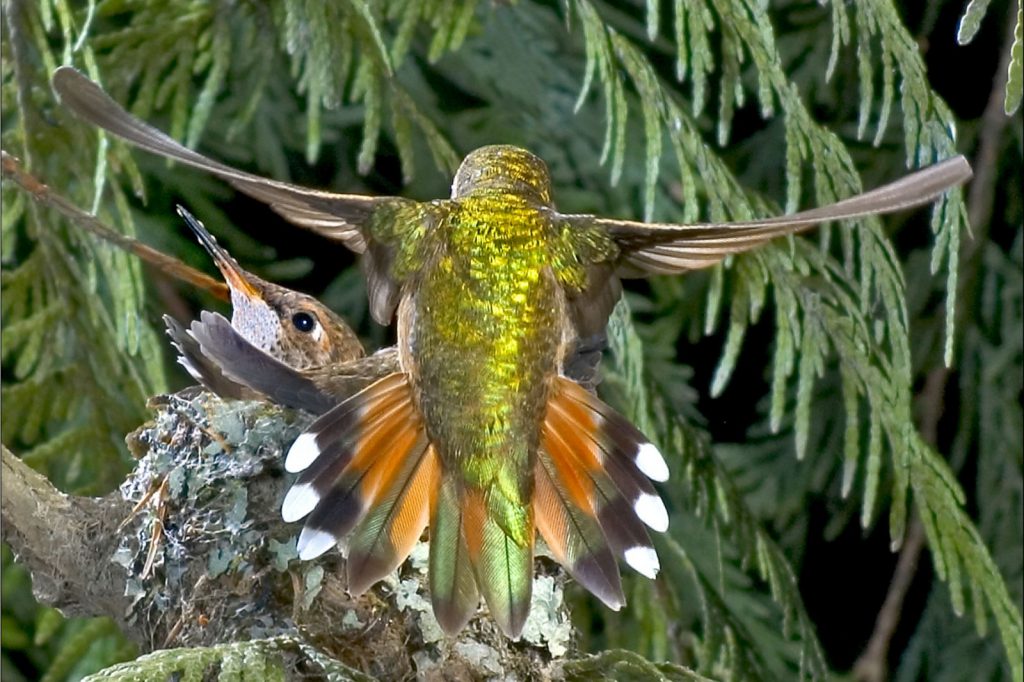
Rufous Humingbird taken by Damon Calderwood – Thank you Mr. C!
Damon’s newest book Birding for kids will be available May 2020!
Becky is a Clinical Hypnotherapist, Registered Holistic Nutritionist, Landscape & Production Horticulturist, Arborist and budding Herbalist, who recognizes and specializes in the link between healthy soil, the gut and the brain. She also loves being the mom to her two wild and crazy kids Brooke & Connor whom keep her and her ever loving, creative husband Jay on their toes.
Becky is a Clinical Hypnotherapist, Registered Holistic Nutritionist, Landscape & Production Horticulturist, Arborist and budding Herbalist, who recognizes and specializes in the link between healthy soil, the gut and the brain. She also loves being the mom to her two wild and crazy kids Brooke & Connor whom keep her and her ever loving, creative husband Jay on their toes.
Design by NXNW.
mary ogg
July 8, 2023 at 4:43 pmHi, I found your article informative, interesting and helpful with very nice pictures. Here in Mason County Washington in the winter we leave apples on the tree for the stay-over hummingbirds to feed. They like the apples after they have froze and de-thawed. Nobody told us about it. We saw it for very own eyes! We are sure to leave fruit on the trees and bushes for the hummers to forage in the winter. I didn’t see salal. I’ll bet the hummers like the flowers and the fruit.
John Altieri
September 28, 2023 at 9:04 pmwhat bush can I plant , live on Seneca Lake ,ny to attract humming birds . need 3 , cost with shipping zip code 14527